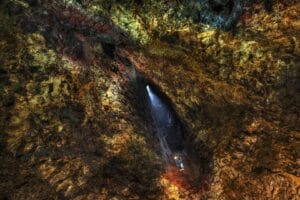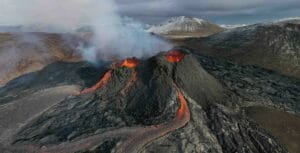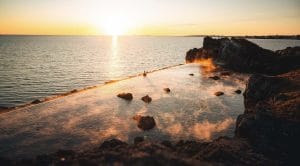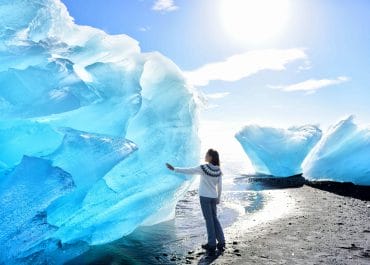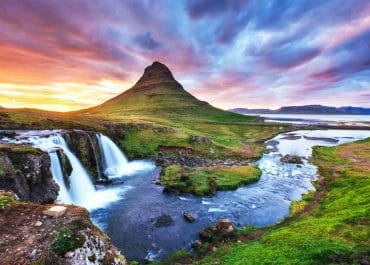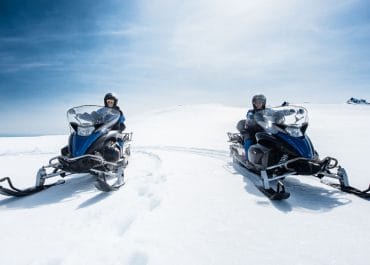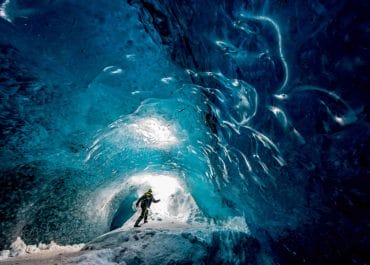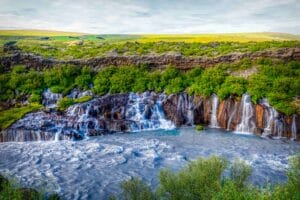






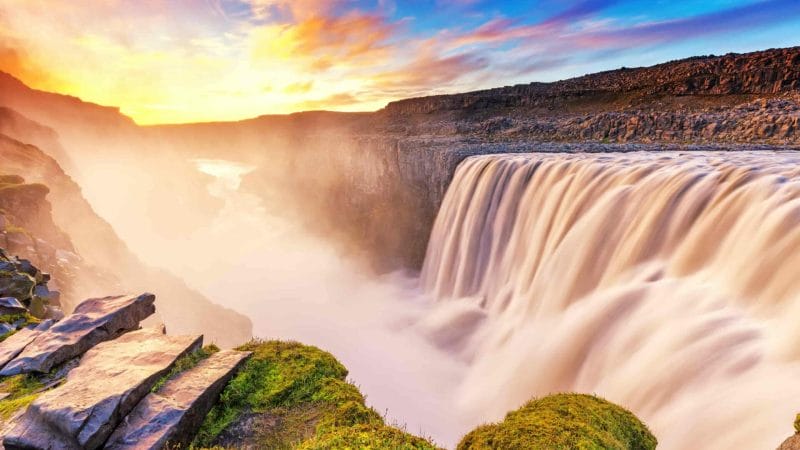

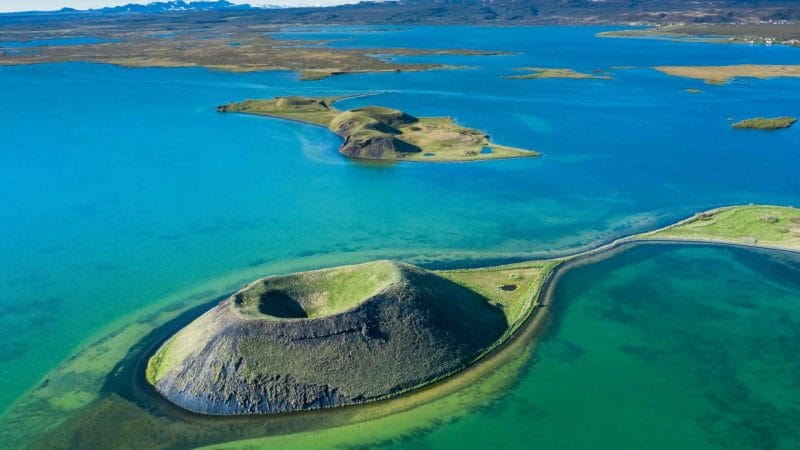

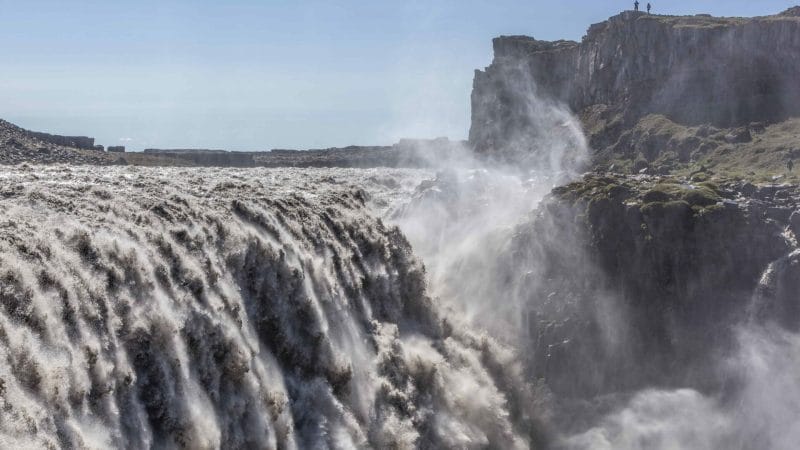

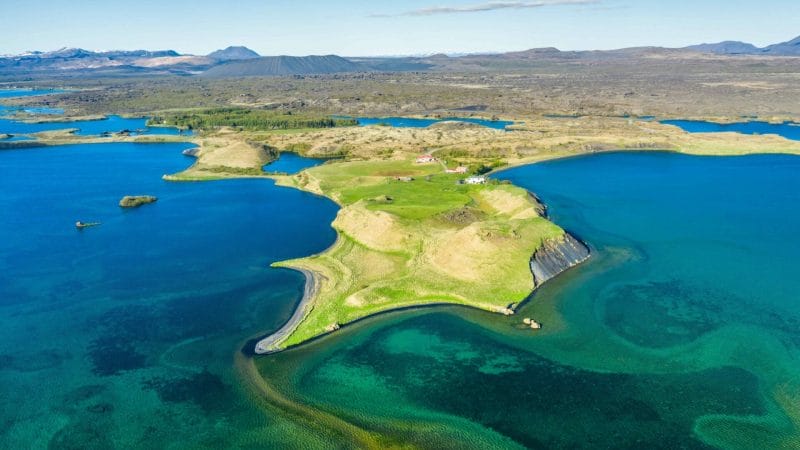









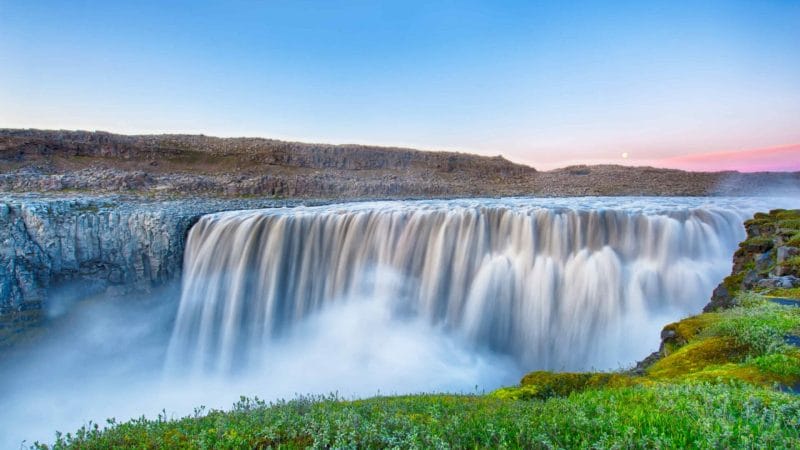








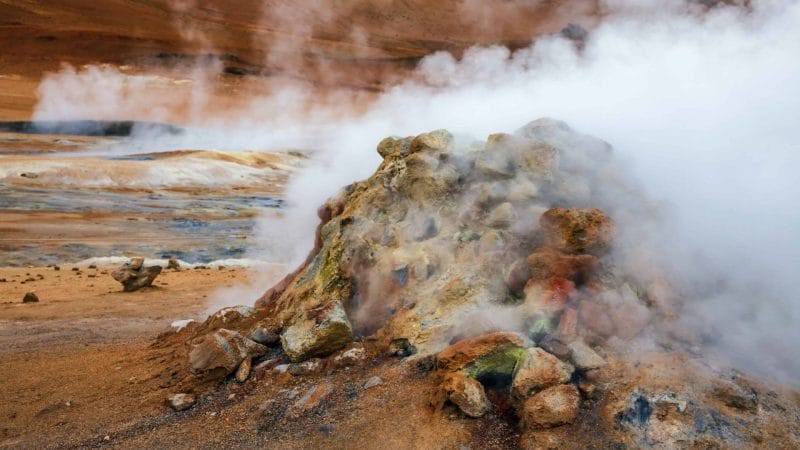





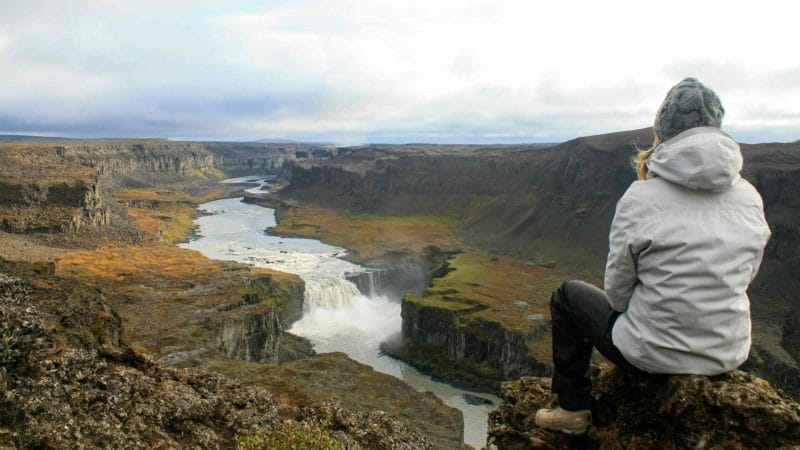


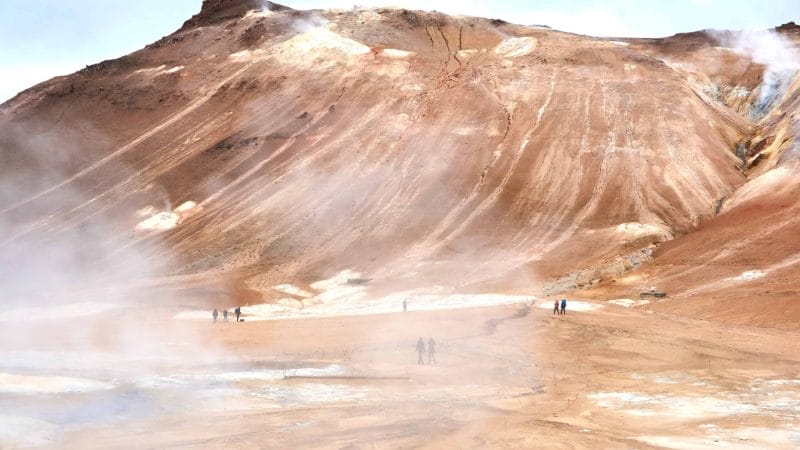














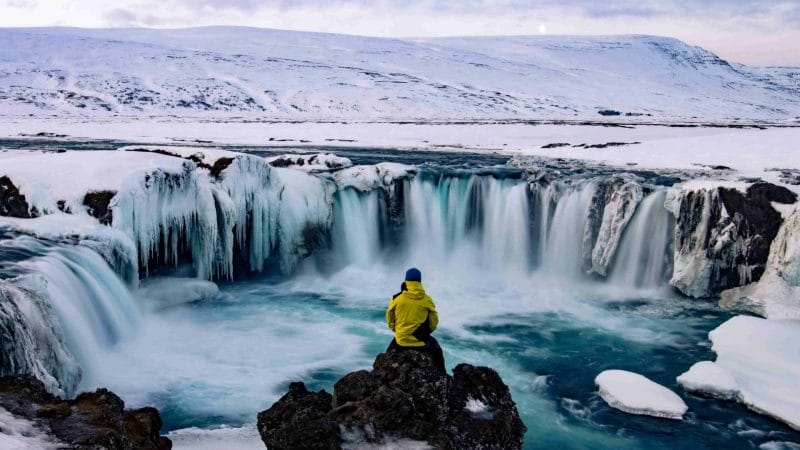
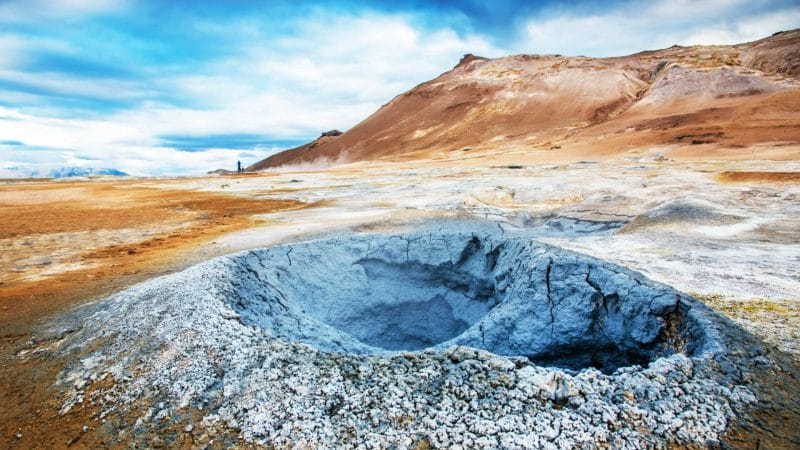





Exploring, experiencing, and expanding your horizons is all that you need to do to ensure that you have seen and felt every single beautiful scenery and thrill that the land of ice and fire has to offer you. It is no secret that Iceland is loaded with places and destinations that you can visit and get face to face with the new and exciting things. Every corner of the country hides gorgeous places waiting to be explored by new, budding, adventurous tourists. Most tourist populations of Iceland choose to travel towards the south which is a lot mellower in terms of climate and ever-changing temperature. But there are several wonders that the north hides within itself. Just like the south has the Golden Circle, the most traveled route of the country, the north has the Diamond Circle, the route that goes through some of the most popular destinations in the north.

What is the Diamond Circle?
The Diamond Circle is a paved route that passes through several different glorious destinations of northeast Iceland. The diamond circle could be seen as the hidden, lesser-known but equally beautiful, if not more, as the infamous Golden Circle of south Iceland. Both these circles are quite similar to each other. Just like the golden circle is located near the capital city of Iceland, the Diamond Circle is located near the Akureyri, also known as the capital in the north.
The circle is also described as a “magnificent circuit”. It is about 250 kilometers long and runs across five main destinations along with a couple of other gorgeous add-ons. What makes the Diamond Circle special is the fact that it is not only every bit beautiful as the golden circle but also a lot less crowded and contains many more destinations en route in comparison to the golden circle which has only three main destinations on it. Let’s explore what the Diamond Circle has in store for you.
Top Destinations on the Diamond Circle
Since it is a circle, there are two ways to travel on the Diamond Circle. The clockwise travel will lead to Húsavík which is about 58 kilometers from Akureyri and the anti-clockwise journey will lead you to Goðafoss waterfall first which is about 29 kilometers from the city. No matter how you choose to travel, the total driving time will remain the same so it completely depends on what you are in the mood to see first – the beautiful breaching whales or the foamy white cascading waters. Let’s find out what the Diamond Circle has in store for you.
Goðafoss Waterfall

The very first stop when you start on the Diamond Circle route from Akureyri is the Goðafoss waterfall. This 12-meter-high and 30 meters wide waterfall is also known as the waterfall of gods, all thanks to the Ex Pagan Chieftain and Lawspeaker Þorgeir Ljósvetningagoði who established Christianity as the official religion of the country in the year 1000. Right after his conversion to Christianity, Þorgeir Ljósvetningagoði threw his statues of the Norse gods in this after his conversion which happened in the very first parliament house of the country, Alþingi Parliament at Þingvellir.
The glacial river Skjálfandafljót is the source of this waterfall which is about 180 meters long. the closer you get to this divine beauty, the higher you feel yourself rising. One to keep in mind here is that there are no safety barriers near the waterfall indicating a safe distance for viewing. And since glacial river waterfalls can be tricky and dangerous, ensure that you have maintained a safe distance from the cliff to eliminate the possibility of the fall completely. The waterfall is located just by Ring Road 1 so you will not have to travel additionally in separate directions.
Lake Mývatn
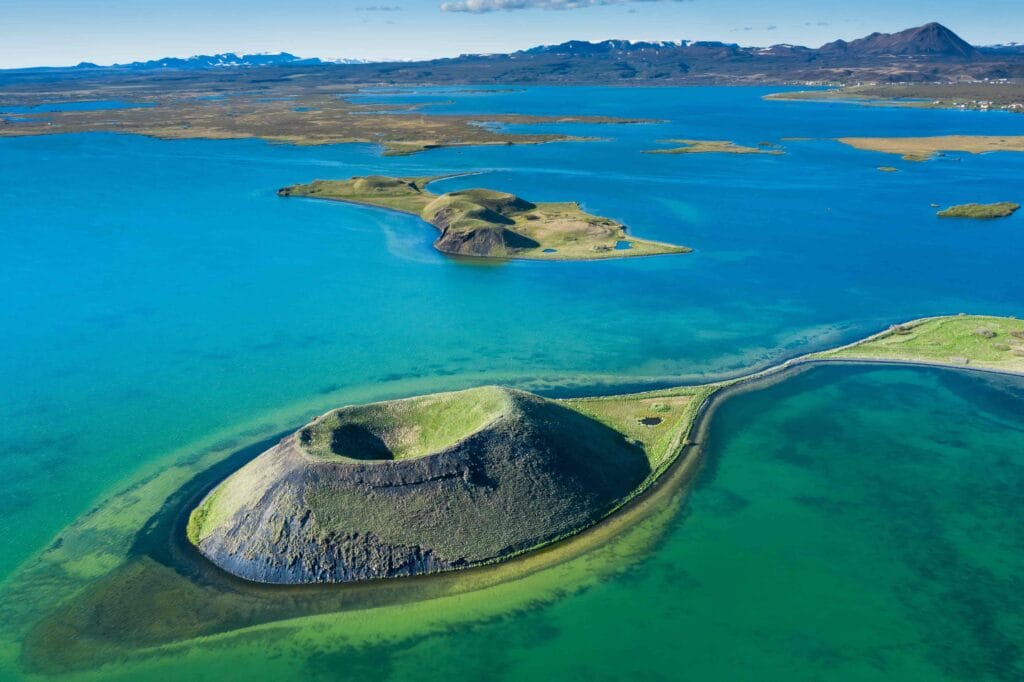
This beautiful place is a true example of Icelandic landscapes with contrasting beauty. From various colors of the landscapes to rich wildlife, birdlife, and lush vegetation, Mývatn lake has it all. It will be the second main stop after the Goðafoss waterfall and it is at a distance of about 53 kilometers from the waterfall. The Mývatn lake was created as a result of a volcanic eruption and was created about 2300 years ago. Several lava rock structures can be found near the lake surrounding it indicating the eruption that occurred years ago. Not only near the lake but you can find some lava structures under the lake as well which makes it quite different than other locations.
Lake Mývatn is spread across an area of about 36.5 km2. It is the fourth largest lake in the country. The lake and the surrounded area are protected as a natural reserve of the country. The lake is known for its natural lush beauty and housing the greatest number of duck species in the whole world. It is a true heaven for bird lovers. Another thing that makes the lake special is its incredible vegetation. You can easily find underwater plants like diatoms, a type of algae, and near there is plenty of aquatic char near the surface. The lake is shallow so sun rays travel right to the bed penetrating the waters creating a beautiful scenery.
Dettifoss Waterfall
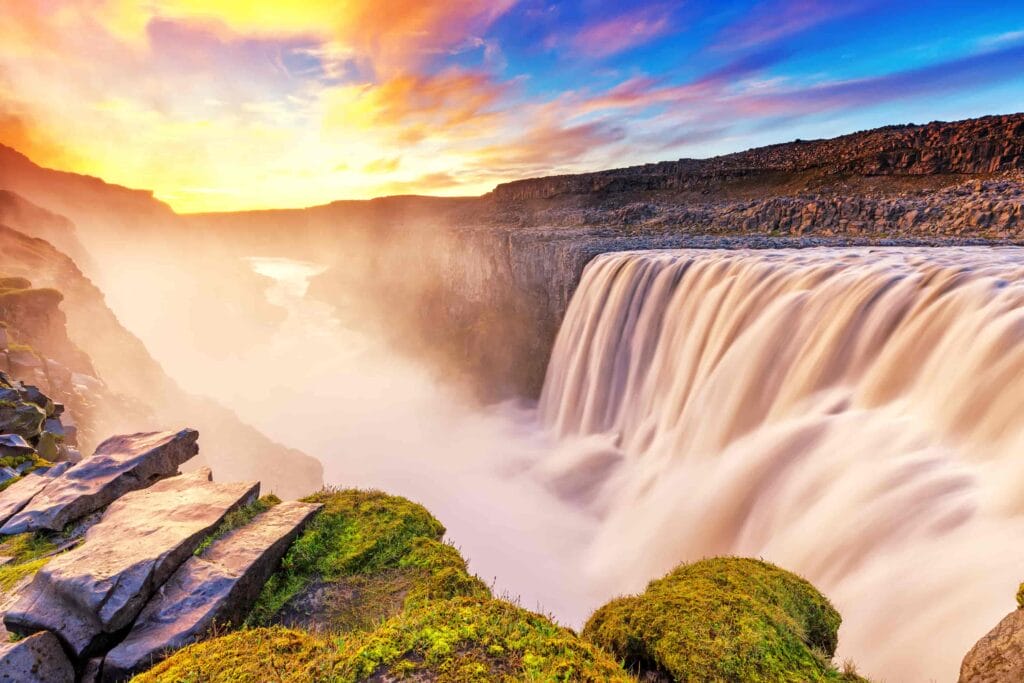
If you are driving around the diamond circle and looking for some exceptionally thrilling destination then your wait is over. Dettifoss waterfall is one of those places which will give you Goosebumps and offer an exceptional thrill. Dettifoss waterfall is the most powerful waterfall in the whole of yourself. Over 193 cubic meters of water pours over the edge of the water every second at incredible speed creating an awe-inspiring display.
The waterfall is 44 meters high and about 100 meters high and has a flow of 193 cubic meters which means that you will hear a thunderous sound of the water falling downwards into the ridge as you get closer to the waterfall. The scenery here is different from any other waterfall you may have seen in the country already so be prepared to be surprised. The rugged surroundings, the milky white waters of the glacial rivers, and the larger-than-life waterfall make everything else seems smaller, including your self.
Ásbyrgi Canyon

Iceland is a land of sagas, myths, and spirits. Locals are very spiritual and believe in the existence of elves and other mythical creatures. This is why Ásbyrgi canyon is also known as the shelter of the gods. People who are more in touch with their spiritual energy have claimed to come across elf colonies, concert halls, and many more elements of civilization. Ásbyrgi is said to be the capital city of elves.
Ásbyrgi canyon is the last stop on your journey and is a part of the Jökulsárgljúfur canyon, located in Vatnajökull National Park. It is about 3.5 kilometers in length, 1.1 kilometres in width, and 100 meters in depth. Norse mythology has its place recorded as the hoofprint of Sleipnir, the eight-legged horse of the Norse god Odin. The canyon is said to have formed when Sleipnir stepped on earth from Midgard. The horse-shoes shape of the canyon may have encouraged this myth.
At the bottom of the canyon lies the Botnstjörn pond. You will need to hike down the canyon to see the pond. The trail that leads down to the pond is known as the Skógarstígur Trail. There are several other hikes available near the canyon if you feel like hiking a little bit more. Another thing that you can do is walk up to the cliffs and take a round around the canyon. The view is simply magnificent from up there.
Húsavík

A town deep in the north of the country, Húsavík is better known as the whale watching capital of Iceland is the largest town in the district of Þingeyjarsýsla. Even though the town is famous for its whale and dolphin population, there are several other things that you will get to see and experience here. The first is the beautiful Húsavíkurkirkja church of the town which could arguably be one of the most beautiful churches in the country. There are only two other churches that can be found in Iceland which have the same kind of structure, built and style.
Being in this town means that you cannot miss on whale-watching expeditions. Several guided tours take you to the waters and ensure that you catch more than just a glimpse of these beautiful fishes. It is smart to book a guided tour for this particular activity. You can simply meet with your guide at their base if you have decided to go on a self-driving tour of the Diamond Circle. You will find about 23 different species of whales and dolphins in the waters near the town.
Another thing you must visit is the whale museum of Húsavík. There is a 22 meters-long life-size whale skeleton on display in the museum for the marine life enthusiasts. Along with that, pay a visit to the cultural center of the town, also known as the Museum House. There are some parts of the South Þingeyjarsýsla District Museum, the natural history museum, an art gallery, a maritime museum, district archives, folk museum, and photo archives.
More Places That You Cannot Miss
Mt. Námafjall and the Boiling Mud Pools

This particular place lies between Mývatn lake and Dettifoss waterfall. It will only take about 18-20 minutes to reach this place from the lake. Mount Námafjall is surrounded by boiling mud pools and the air is filled with the smell of sulfur here. The landscape is completely different here in comparison to the lake. Where the lake is very lush and green, the boiling mud pool area and the mountain area is high on brown shades. If you decide to stop here on your journey ensure that you do not stay in the geothermal area for too long as the sulfur and other gases releasing from the mud pools can give you headaches.
Stick to the paths and try not to stumble upon the rocks. Everything is very hot in this area. But if you are careful enough and follow the instruction, it is guaranteed that you will get to experience sights which are to be found nowhere else in the world. This place could be a heaven on earth for fans of science and chemistry.
Hafragilsfoss Waterfall

It could turn out to be a bumpy ride but it will be worth it. Hafragilsfoss is only at a distance of 7 minutes from the Dettifoss waterfall. So, it won’t be very difficult to visit this particular waterfall. The waterfall is wider than most waterfalls that you would see in the country. Hafragilsfoss waterfall has a width of about 91 meters and a height of 27 meters. If you are coming from Dettifoss you will be able to figure out that this waterfall looks like a mini version of the same.
Jökulsárgljúfur Canyons
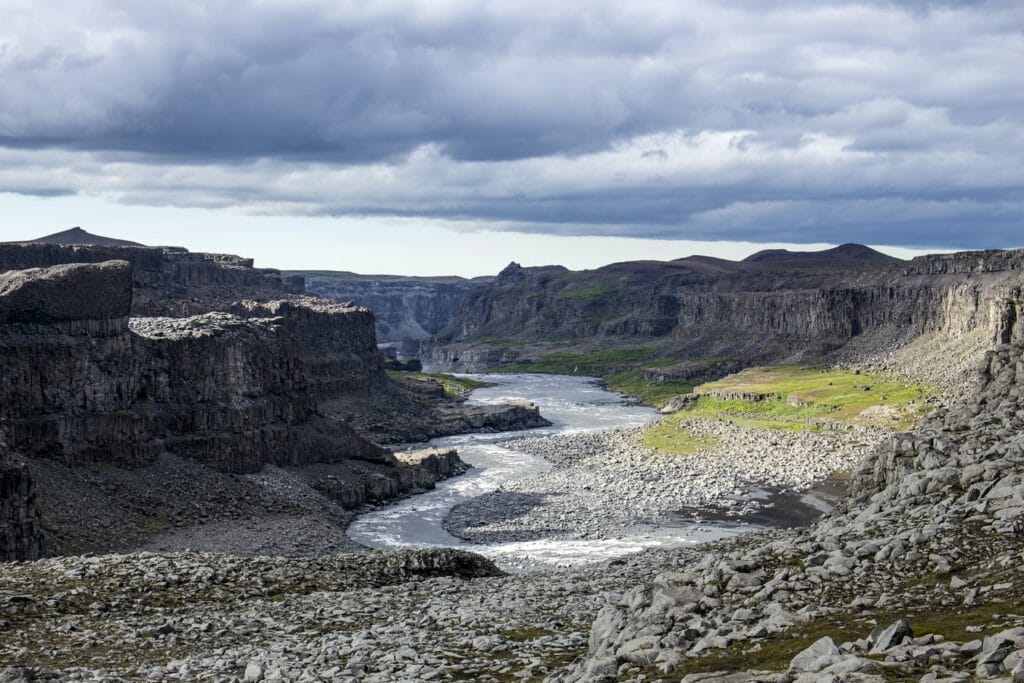
Located between the Hafragilsfoss waterfall and the town of Húsavík, Jökulsárgljúfur canyons is situated in the Vatnajökull National Park. It takes about 40 minutes to reach the canyons from Dettifoss waterfall. Jökulsárgljúfur canyons can be translated as the glacial river canyons. It is 25 kilometers long, 2.5 kilometers wide and about 100 meters deep. There are cliffs on both sides of the canyons. The canyons were a result of the powerful Jökulsá á Fjöllum, The Glacial River in the Mountain.
Several natural formations can be found in this canyon. From powerful waterfalls to basalt columns, cliffs, pillars, natural rock formations, to springs and lush vegetation, everything that you hope to see can be found in these canyons. While you will most likely visit this place on a single day trip, it is still worth knowing that there are several different camping areas, hiking trails, and a beautiful site here. So, if you are looking for a place to camp in isolation, Jökulsárgljúfur can be it.
Hljóðaklettar - Echo Rocks

Also known as the whispering rocks of the north, Hljóðaklettar echo rock formations are popular for their acoustics in the whole country. You will have to change your route a little bit and travel on road number 862 to get to the caves. Take a detour after you pass Jökulsárgljúfur on road number 862 to get there. It will take you about 120 minutes to get to your destination. Needless to say, the landscape here is quite serene. You will find a total of 3 rock formations here known as the Kastali (the castle), Tröllið (the giant), and Kirkjan (the church).
Kastali is a rock formation that looks like a castle hence, its name. A few steps further are Tröllið – a rock formation that looks like giants or trolls standing tall to guard the castle. The last formation is Kirkjan, the church, which is located about 100 meters from these two formations. It is on the other side of the shallow river/stream that runs near the rocks. Kirkjan is a perfectly symmetrical rock arch structure which has been formed naturally. The acoustics in this cave made by the arch is unbelievably good. Echo and reverberations can be heard in this cave which turns out to be surprisingly good for some people while others receive them as spooky. Either way, these caves are a wonder of nature and must be visited when you are on a tour of the Diamond Circle.
Tjörnes Peninsula
When heading to your last spot Húsavík, the whale watching capital of the country, make a short journey to the small Tjörnes peninsula to watch cute little puffins hopping around the cliffs. Make sure that you do not disturb the birds and observe from a distance. If you are a collector or have children with you on this tour then the layers of fossil shells of the peninsula will sure be an enticing thing for you.

Way to Travel Around the Diamond Circle
Just like any other sightseeing program in Iceland, the Diamond Circle experience comes in two major ways for you – guided tours or self-driving. Both of these options are equally good and either of them can work great for you, depending on your requirements.
Guided tours are available in abundance for the Diamond Circle. From classic 5-destination tours to add-ons, there is no shortage of options for you. But you need to make sure that you have done your research before booking a tour. There are tens of additional locations that you can visit when touring around the Diamond Circle so make sure that you have chosen the ones you want to visit beforehand. Chose a pre-selected or customizable tour according to your list of destinations. Tour guides always accompany you throughout the journey and help you out on every step.
For the spirits of the travel world, self-driving is the key. Diamond circle and additional destinations can be rough so you will need a 4×4 vehicle for your entourages. Stack up with snacks and other essentials in the beginning and keep on restocking when you get a chance. The most important advantage here is that you will not have to decide where to go and what to do beforehand. You can simply decide on the way and take as many detours as you like. Although, even when self-driving, book a guided tour to watch the whales in Húsavík.

When to Visit
Iceland is open for tourists and visitors all year round but there are still some certain time frames and durations that if followed can make your journey smoother and more enjoyable. Summer, spring, and fall seasons are the best time to go on a trip around the diamond circle. The reason is simple – the weather. Northern areas of the country often see harsh weather conditions in the winter season due to which many roads end up being very difficult to cross. There is a high possibility that you will find snow on the roads as well.
Regardless of the challenges, winter season turns a beautiful page around and brings in a completely different picture of all the destinations on the Diamond circle. So, if you do plan to travel in winters, ensure that you are either extremely good and experienced in driving in snow or have hired an experienced driver from renting and tour agencies to accompany you. Iceland specifies several guidelines, rules, and policies to help tourists understand a safe way to self-drive in snow. Be sure to check them out.


